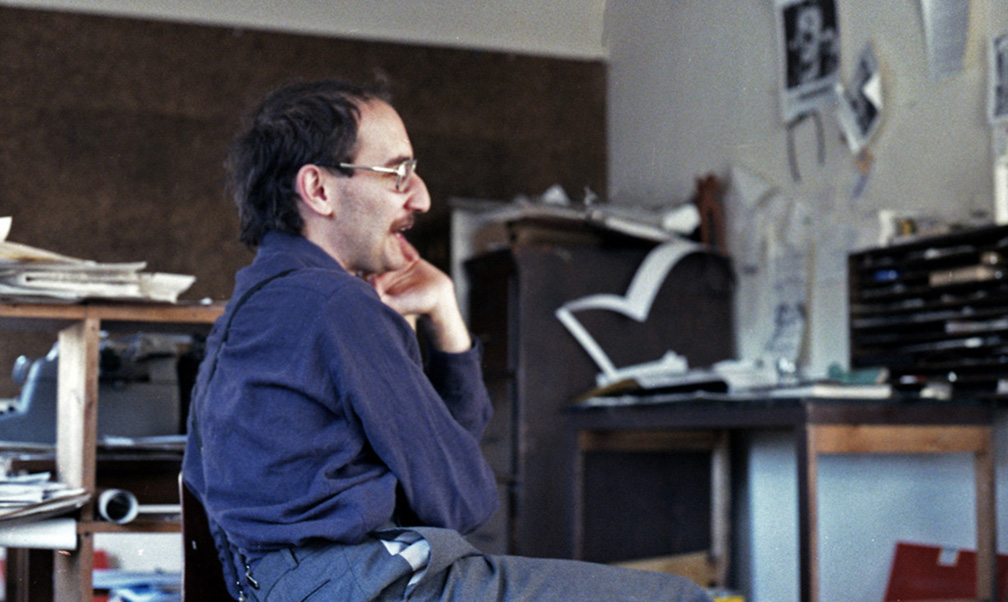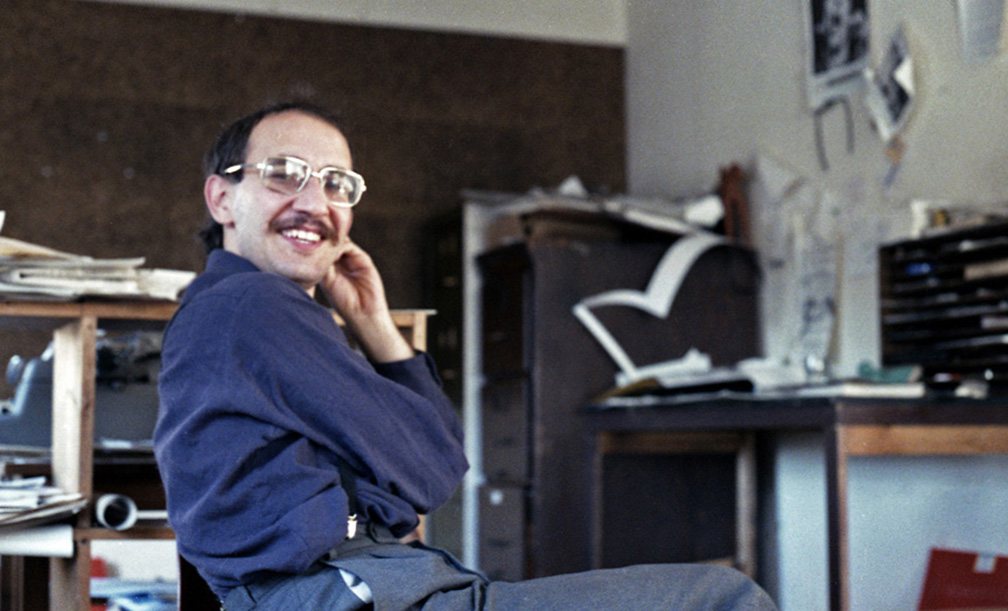The opening this past September of the Centre for Experimental Art and Communication at 15 Duncan Street establishes this previously ‘movable’ and sometimes low-profile project as an important new forum and facility for art activity in Toronto and in Canada. Equally significant is CEAC’s independent acquisition of a large four-storey building in the light-manufacturing area south and west of Queen Street and University Avenue – an area that in-the-know gossips and investors are saying looks to becoming Toronto’s counterpart to New York’s Soho neighbourhood.
RH: Tell me the basics. How does it start? Is CEAC just another name for K.A.A.? Is that how you’re continuing to operate?
AM: Well, you see, the K.A.A. is still alive and well. But the K.A.A. is now behind the props – the frame of reference.
RH: That’s the name of the corporation.
AM: Yes, that’s correct.
RH: And that’s a non-profit charitable operation.
AM: Right. And all those things, yes.
RH: When did you start then, then?
AM: Well, it’s very hard to say when it started.
RH: When did you actually get a charter, say?
AM: Oh God, I frankly don’t know. All of a sudden one appeared. Somebody told me there was one and I said that’s fine. There’s always been some people in and out of this, you see. It started as an act of… radicalization of ourselves, I suppose, in a very naïve, innocent way. And also it started out through the support — intellectual and economic — of different individuals. Some of that support carries on to the present, and other people came into the scene and others dropped out. So the story – not the history, but the story – is very fragmented. I’m one of the few, I suppose the only one, who survived.
RH: Well, can you remember who was there in the beginning, or would you rather not tell?
AM: No, I prefer not. I don’t have the time to think about it. Actually, it will take me some time to figure that out myself.
RH: So now it’s K.A.A. operating as CEAC?
AM: Yeah, CEAC is the public front. We wanted it to be descriptive.
RH: Do you have any other branches of K.A.A. operating now?
AM: Nothing is really the ‘son’ of K.A.A. Mostly the connections are ‘cousins’ of K.A.A. CEAC might be the son or daughter of K.A.A., but we don’t have any other children any more, just connections or cousins, projects where we might work with other people. For instance, one old one that we had was International Global Tools, which was connected with a large group of people working in Italy. It was involved with interface, working with computers, video and that stuff. We even applied to Explorations several times in a row, but it was always turned down. I never figured that out, until we learned that Michael Hayden got away with a very nice grant for a basically very similar project. It was very nice somebody got it, anyways.
RH: International?
AM: No, no. I mean he got a grant for the computer interface, and the Xerox and the video. I’m saying basically it was a similar project to that, except we never got a single cent of support which seems to be very typical of our activities. You know, we’re doing things despite.
RH: Well, where is your support coming from now?
AM: Well, the main one – we get some funds, obviously, from the councils. But also we have some, a few, private donors, so to speak. The major one is this lady – obviously, I can’t tell you her name, though, because she doesn’t want to publicize her name, she thinks too many people will come and ask her…
RH: I don’t want the names, I just want to understand how it’s…
AM: Yeah, sometimes it’s very strange, you can never figure that out. Some people might be very supportive without being involved with the scene at all. You might see them sometimes, but they don’t really follow up, they don’t really have any aspirations to become… muses or whatever, to change the world. You can never figure that out, why they do it. Well, anyways, she comes from a very rich family, her father was a British army officer, she’s the only daughter. And she’s supporting us, which is very nice.
RH: And you own this building now, or you have a mortgage now. Is this right?
AM: Well, I’m not the administrator – it’s a very confusing situation. I’m very bad at… figures, although I love quantitative approaches as you know. But I just totally get confused by little figures of additions and subtractions, and that sort of juggling of situations is very hard to pinpoint exactly.
RH: Well, the question was more direct than that. Does K.A.A. now own this building? That’s what everybody’s been saying.
AM: Oh. Yeah.
RH: Yes? It’s true?
AM: Yes. That’s correct.
RH: Did you do that through the National Museums Policy?
AM: Oh no, not at all. Actually they refused to help us because — I don’t know why. Apparently they felt that we’re becoming too strong and so they felt afraid, you see. For instance, Vehicule got some grant, right, but their proposition was totally up in the sky. We obviously owned this building and so on when we approached them, but they turned us down for sort of ridiculous grounds. So we’re still obviously going on anyway, despite them.
RH: So you got the building through other private support?
AM: Yeah. We still have a lot of things to change around. When we moved in we did so much work. Nobody thought we could even do it because it was all fragmented, walls all over, and the floor was not as you see it now. It was a layer of carpet on top of a layer of tile on top of a layer of asphalt on top of a layer of dirt, and that had to be scraped up by hand. And then the whole rewiring, all that kind of stuff, etcetera etcetra etcetera. It took us a couple of months. It was just a miracle that we could make it for the deadline, which was sometime in September. We still have some work to do, like re-vamp the roof to make it into a very pleasant roof-garden, and expand upstairs here so we have a larger performance space, and fragment downstairs possibly so we can have production areas. We consider this place to be a place for production rather than a voyeur’s little nest.
RH: So is the Liberal Party a long-term tenant on your two middle floors?
AM: Oh no. They’ll be gone at just the precisely right time, so that by 1979 we’ll have four floors. By that time we’ll be articulated in such a way that it can be a whole complex situation, and can accommodate all kinds of things.
RH: K.A.A. is a corporation. Is there a Board of Directors operating it?
AM: Yeah, of course.
RH: You don’t want to say who those people are?
AM: Well, it’s not private information.
RH: I could always go look it up.
AM: Yes, that’s right.
RH: What is your staff, or what constellation of people are working here?
AM: Oh, all kinds. More specifically, alright. Well, we have somebody taking care of video, Saul Goldman. Then we’ve got an archivist who’s very good, very precise, very accurate. I’ll show you later on, there’s a big room which is going to be the archives.
RH: Who’s going to do that?
AM: John Faichney.
RH: And Bruce Eves is working here?
AM: He’s Assistant. And Diane Boadway also works here, but she’s not here today.
RH: And what are her functions?
AM: She takes care of special projects from time to time.
RH: And you’re the Artistic Director? What do you call yourself?
AM: Oh, I’m just the janitor. And after that it depends what we’re talking about. There might be other people involved as collaborators, but they keep changing.
RH: That’s the basic staff.
AM: Yeah. The little army. And the typist. You know who’s the best typist I’ve ever met? Miss Honey. She’s the best typist I’ve ever met in my life. She can type very very fast, answer the phone, talk to the people in the room, write a letter, all at once.
RH: So she’s sometimes around, too.
AM: Yeah. She contributes little different things from her collection. Have you ever seen anything from her collection? Quite incredible.
RH: Let’s get on to your artistic policy. Have you articulated any artistic policies?
AM: I’m not sure what you mean. In terms of what?
RH: What you want to show, whether you even want to have exhibitions or whether you really prefer to get production activity and special events happening here.
AM: Production. We really don’t care about ‘showing’ things. I don’t think nowadays people really care to go to galleries and look at things. We find it much more interesting to have something going on in a different way. So that anytime a person comes here, whether it’s daytime or nighttime or holiday, there’s always something we can communicate to him. We’ve had people coming here from very far away and seeing the place, of course, but just coming in to talk. There was nothing on the walls but they didn’t care.
RH: Do you invite people or do you look for people coming to you with projects?
AM: Both have happened. Usually what we try to do is to build up contradictions – without ambiguity.
RH: Indeed.
AM: No no, it’s quite true. I’m quite serious about it, in terms of reflecting present needs, so to speak, and yet denying them at the same time. Doing things that people don’t really like at all. Like people are down at the moment on logic, for one thing, and we do it. That’s an example.
RH: But that’s not trying to be a bad boy. Is it?
AM: No, it just happened that way, actually. Looking back you realize that what you did was actually the opposite of what everybody wanted. That’s what happened. It keeps happening all the time.
RH: It makes for lots of discussion. I’ve certainly heard lots of comment on the Contextual Art seminar. I guess it sort of illustrates what you were saying about contradictions because the funny thing was that nobody seemed that pleased about it but everybody was talking about it. I thought it was quite an accomplishment. Anything that stirred up that much talk must have some significance.
AM: Actually, historically it was quite important because it was something happening outside the New York mainstream. In other words, it was another event, a collection of energies that was happening outside New York. New York is losing control of artistic and intellectual direction.
RH: What’s coming up here now? What’s on your books?
AM: Actually we survive day to day. Which becomes a problem and an asset at the same time. We have no binding ties to anybody. One of the things we’re taking care of now is showing the art of the super 8 film. So there will be some sort of series of screenings. And production too, making films and showing films.
RH: Is that new super 8 distribution project part of your operations?
AM: I started it out together with other people and right now it’s growing so fast that it needs to be fragmented in different areas. They’re working here but it’s a separate project. I think here we want to develop, rather than a bureaucracy of super 8, a production and consumption of super 8, in terms of screenings.

